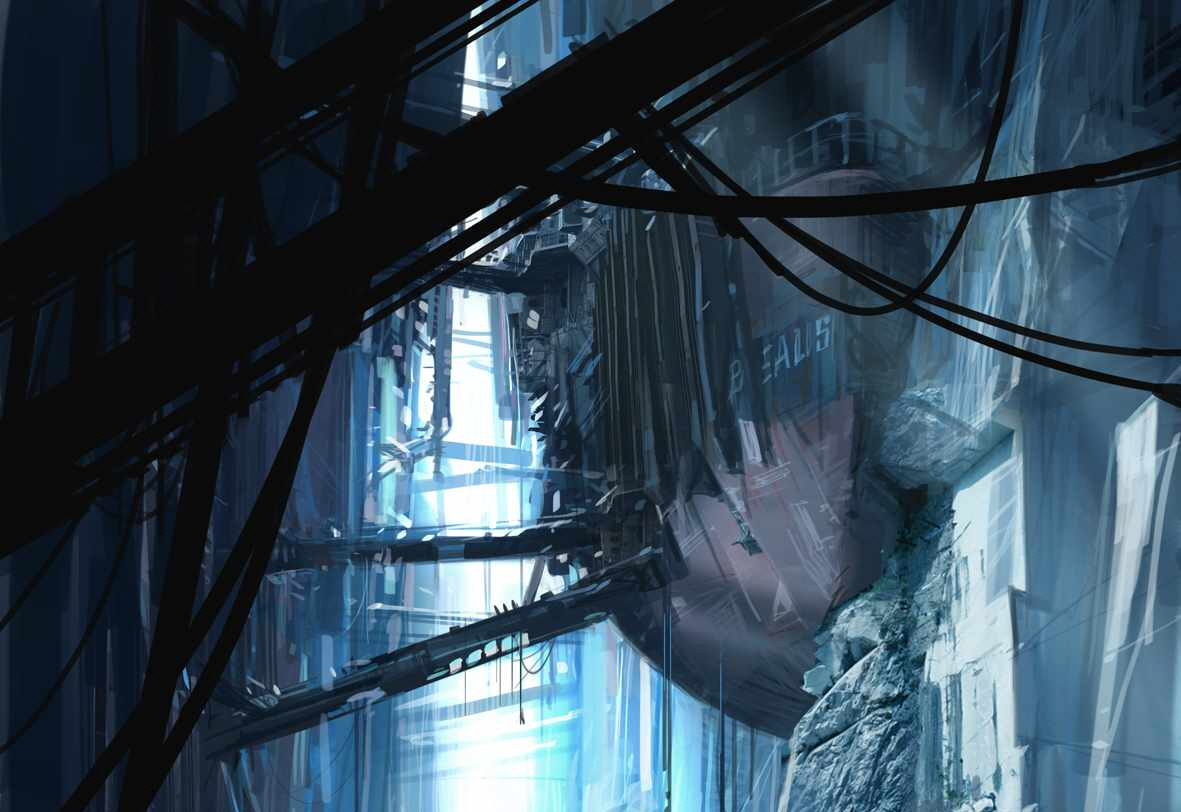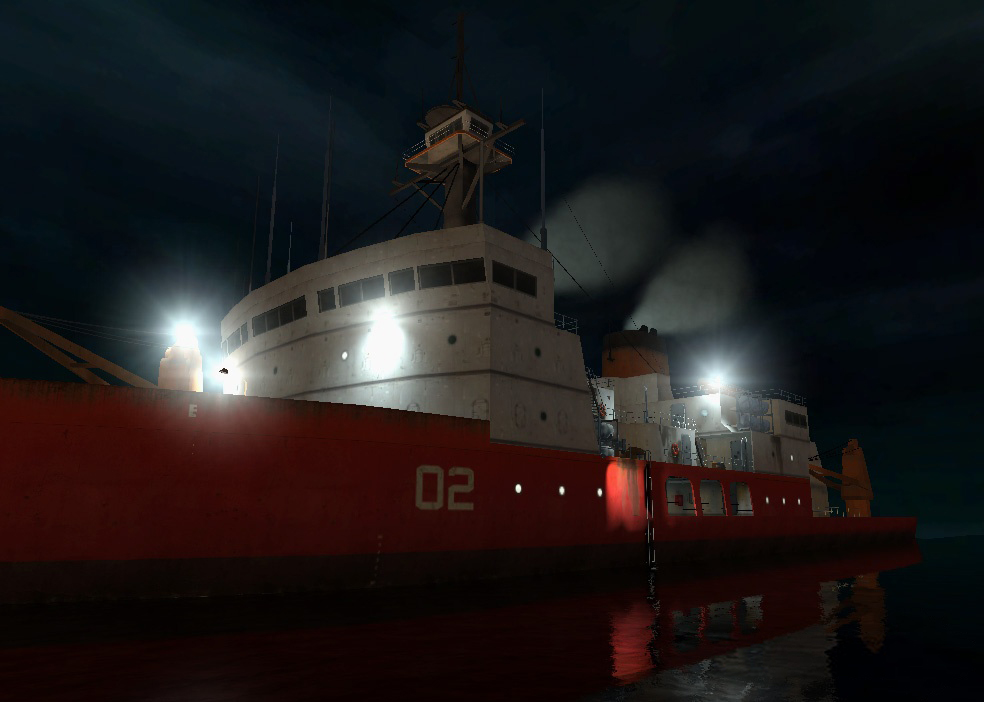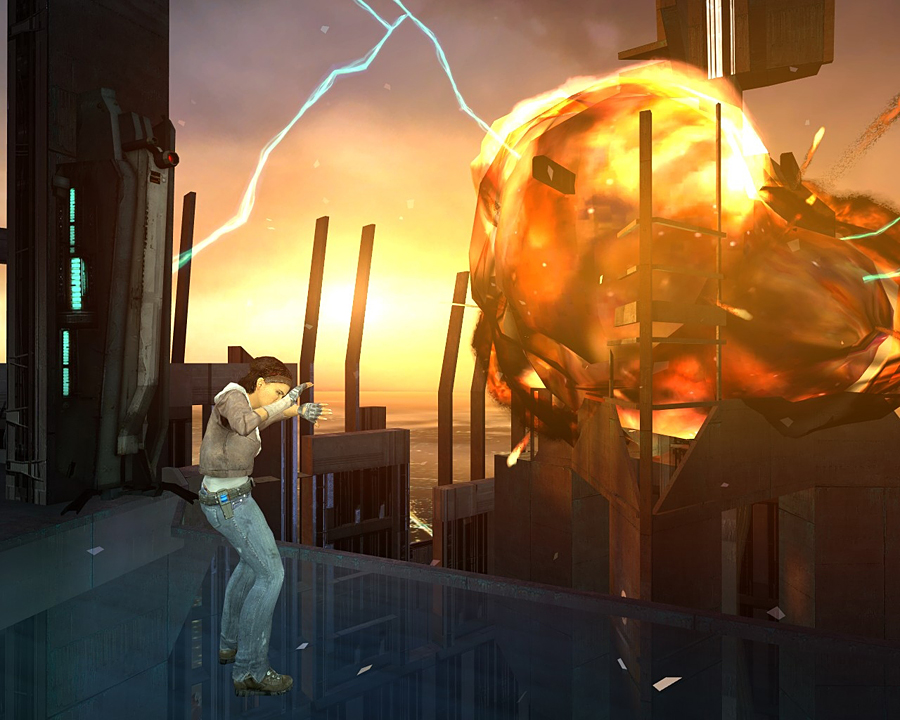Doctor Breen Is Dead

Half-Life 2: Episode 3 - the mysterious research vessel, the Borealis.
I'd been awake only a few minutes when, lying in bed, I began to read former Half-Life writer Marc Laidlaw's Episode 3 synopsis, coyly titled “Epistle 3”. At first, I was inclined to doubt. The possibility that it was an authentic document seemed remote, and to think otherwise felt foolish. It didn’t help any that enough time had elapsed since its original posting on Twitter to crash Laidlaw’s website under the weight of thousands of eager, curious fans, forcing me to read it on Pastebin. But as I read on, I knew the words before me were the bona fide thing, actual descriptors of characters and places that had receded from my mind, and the continuation of an adventure long since given up for dead. I don’t know how I knew, but I did. This was Half-Life.
And I was smiling. An irrepressible, delighted little smile, partly the result of reading the plot synopsis for the series’ climactic conclusion and enjoying every bit of it, and partly the result of the form that synopsis had taken: a blog post. Laidlaw’s method of delivery was so innocuous, so basic, it felt almost comical. The answers to so many questions I had cared about were nakedly written in a series of brief paragraphs. As an old acquaintance put it, it was a sad, strange end indeed.
In fact, it was Brindle’s article, rather than Epistle 3, that pushed me into writing about Half-Life again. He pulled me back to a time when Half-Life meant something very different to me than it does now.
The Half-Life of my youth was one of sprawling, obscure mysteries and vexed questions. These questions and mysteries consumed my adolescent brain and I remained fixated on them for years and years. As Brindle so cleverly puts it, Half-Life was its own self-perpetuating mystery, aided and abetted by a captivated fan base.

An early screenshot of the Borealis from 2002/3, back when it was part of Half-Life 2 itself.
I was one of those contributors and an active member of the Halflife2.net forums. My voice on the forum was loud, arrogant, and brash (I’ve grown so little it’s embarrassing), and, compelled by my own conception of what Half-Life ought to be, I often criticised and belittled the theories of others. To say I missed the point of speculation goes without saying, but this zealotry for getting Half-Life “right” spoke to a powerful desire for Valve’s narrative to cohere. It spoke to a need for answers and a belief that those answers were out there if only we could piece them together. Wilder, more daring speculation felt like a deviation from the path towards enlightenment, and I and others pounced on them like the deranged adolescents we were. And Marc Laidlaw, the series’ leader writer, unwillingly presided over this landscape as a kind of absent god. His word was invoked to seal arguments and denounce others, even as he tried in vain to disabuse us of the notion that his emails and correspondence could be taken as “canon”. It’s a word he never really seemed to care for, and vaguely resented the importance fans attached to it. We never listened.
And now, ten years on from Episode Two’s cliffhanger and a year and change since Laidlaw’s departure from Valve, we have his unofficial synopsis of the episode that never was. It is, in so many ways, the least possible canonical item – little more than an imagined non-reality. And yet it hasn’t stopped fans from finding closure in its words. They know it’s unlikely they’ll ever see Half-Life again, at least not as a direct continuation of Episode Two. The willingness to embrace this document as a final send-off is extraordinary. It’s no one’s ideal scenario, but it is something, and at this point, it appears that “something” is all we needed.

"You have your mother's eyes...but your father's stubborn nature."
For my part, I can rest in peace knowing Gordon’s former boss-turned-arch-nemesis Doctor Breen is in fact dead. DEAD! The ambiguity surrounding my favourite video game villain’s fate at the end of Half-Life 2 drove me mad at the time, mostly because it gave rise to the idea that his consciousness had been transplanted into the body of an interstellar slug. I fought against this idea vociferously, believing it cheapened both Breen and his alien overlords. I mean, it just made good, narrative sense he’d perished in that cataclysmic explosion, right? But Valve were reluctant to answer the question, even in their own sequels. And now I finally see why:
Both outcomes are true.
Yes, Doctor Breen did die when the teleport reactor collapsed. But it also turns out that the Combine had a “back-up” of Breen’s consciousness, and upon his death had uploaded it into a host body. In the early stages of Gordon and Alyx’s journey in Epistle 3, they were to be captured not by the Combine, but by minions of this “BreenGrub” (the host body’s described as an “enormous slug”, so something akin to the Combine Advisors themselves, I guess). But despite holding some power in the larger scheme of things, Breen’s slug-like existence is a deeply unhappy one, and he’s as much a prisoner of the Combine as his original self was. In the second chapter of our Half-Life comic, A Place in the West, Major-General Long suggests that all Breen wants is “to preserve our bodies. Bodies that would, in time, cease to be our own.” I think that was true of Wallace Breen in Half-Life 2, and it’s interesting to me that when faced with that reality, Breen’s conviction crumbled.

Half-Life 2's climactic moment - the Citadel's teleport reactor collapses, destroying Breen in the process.
Honestly, I haven’t thought about Breen’s role beyond Half-Life 2 in a long time. I think of him now only in relation to the world of A Place in the West and how our characters might feel about him as Earth’s verbose administrator. Host bodies and transplanted consciousnesses do not figure into that, sadly. But seeing Laidlaw’s description of what his “survival” would have looked like suggests I was totally off-base with my initial rejection (almost like teenage Ross was kind of a moron). Yeah, Breen’s dead, but there’s still an iteration of him floating around in some Arctic wasteland, suffering the indignity of the inhuman existence he had once tried to foist on all humanity. He’d plead with Gordon and Alyx to end his life, but only the former – us, the player – had the willingness to feel any sympathy for his condition. We might do something about it. Or we might not.
And I think that’s kinda perfect.
Also a little bit perfect? Epistle 3’s timing. With Chapter 4 of the comic in production, I’ve been working hard to finish the first draft for Chapter 5. At the time of writing, it is the only chapter to feature the appearance of one of Valve’s characters in a talking role. That character is, of course, Doctor Breen. Whilst I won’t spoil in what capacity he shows up, the part required a small bit of dialogue. Typing “(1) BREEN” felt like the ultimate fan indulgence, but there’s also a strong narrative justification for it. I loved Breen’s speeches, and there was never going to be an A Place in the West in which he didn’t show up in one form or another (the prologue doesn’t count). I hope, in some small way, it honours both the character and the tremendous voice talent that brought him to life - the late, great Robert Culp.
Once Mike and I have completed A Place in the West, it is extremely unlikely we’ll ever return to the world of Half-Life. For better or for worse, this was our last shot at contributing to that amazing universe. As I have so often said, I don’t think what we’re writing is explicitly Half-Life, and Epistle 3 proves it. We’re very different writers to Mr Laidlaw, and we set out to do something different, but still in the spirit of the world he and the rest of Valve had created. So, for me, there’s no vain misconception that we’re “continuing” the franchise in any way...there is only a sense of a creative debt, a desire to tell a new and interesting story in a world we love so much, and a world that has, ultimately, come very much to a close in the last week.

Concept art for Episode 3 - presumably Alyx and Gordon at the start of their Arctic adventure
Epistle 3 probably doesn’t qualify as canon - whatever that is at this point - but who cares, really? For me, it’s pretty cool to think that ten years after the conclusion of Leyla and Kempinski’s story, the Combine’s regime on Earth is broken, and a final struggle for liberation begins. That struggle sees Gordon Freeman and Alyx Vance, the two heroes at the heart of Half-Life, journey into the Arctic wastes in a desperate search for a space-time-hopping research vessel that may hold the key to the Resistance’s success against the Combine. Allegiances are tested and the correct course of action fiercely debated. After fighting their way through a Combine research station, Gordon and Alyx finally board the vessel, and time and space begin to loosen. Past, present and future collide. A glimpse of the Combine’s invasion nexus in a far away universe convinces the pair to send the ship hurtling towards it on a course of self-destruction…
...only for the sinister G-Man to materialise and pluck Alyx from her suicidal course, slyly leaving the vortigaunts to rescue Gordon. And so Epistle 3 ends - our heroes' fates to be decided at another time, and, most likely, in another universe.
Yeah. I like that. I bet Leyla would, too.
After all, Doctor Breen is dead.
